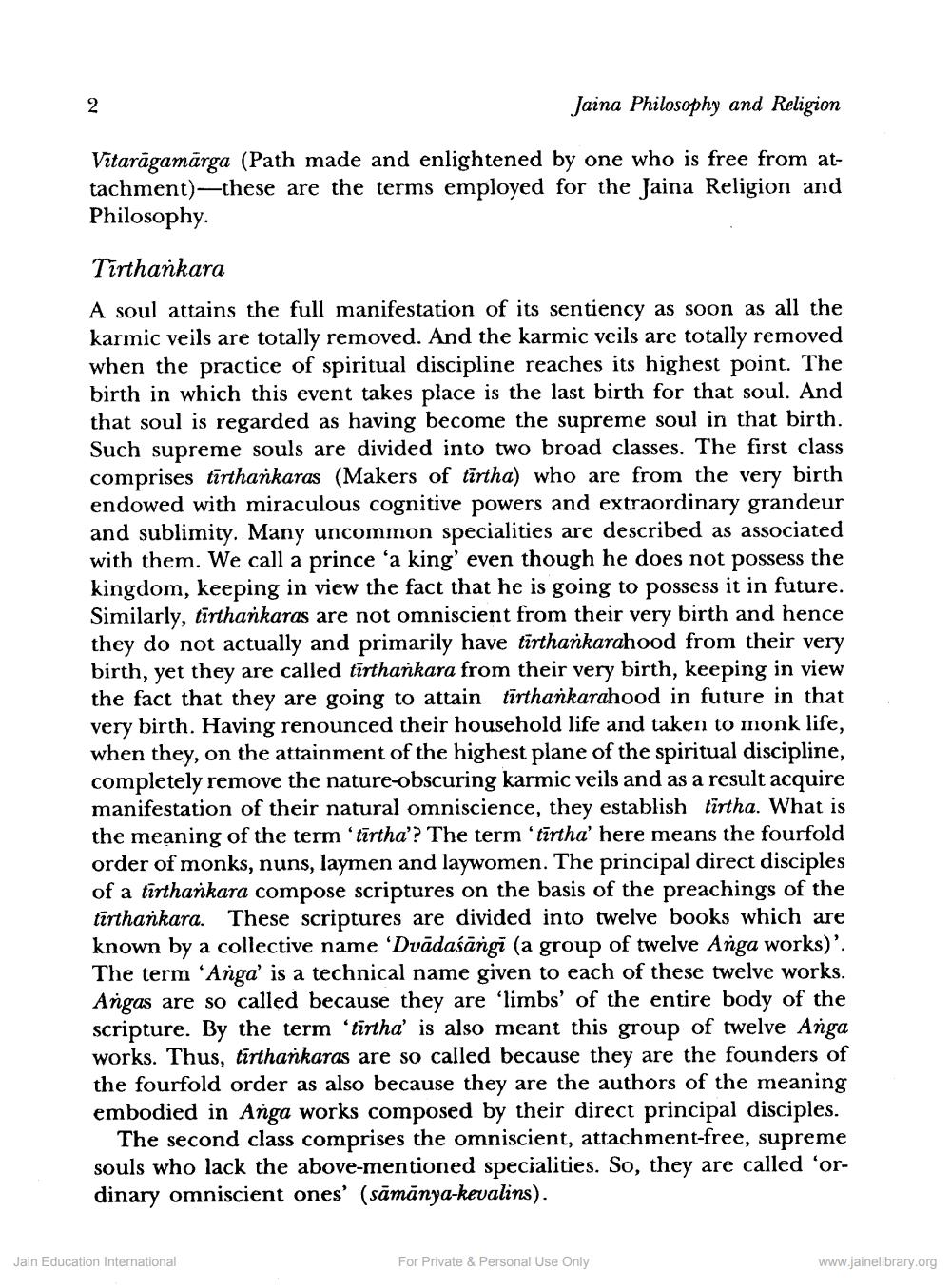________________
Jaina Philosophy and Religion
Vitaragamarga (Path made and enlightened by one who is free from attachment)—these are the terms employed for the Jaina Religion and Philosophy.
2
Tirthankara
A soul attains the full manifestation of its sentiency as soon as all the karmic veils are totally removed. And the karmic veils are totally removed when the practice of spiritual discipline reaches its highest point. The birth in which this event takes place is the last birth for that soul. And that soul is regarded as having become the supreme soul in that birth. Such supreme souls are divided into two broad classes. The first class comprises tirthankaras (Makers of tirtha) who are from the very birth endowed with miraculous cognitive powers and extraordinary grandeur and sublimity. Many uncommon specialities are described as associated with them. We call a prince 'a king' even though he does not possess the kingdom, keeping in view the fact that he is going to possess it in future. Similarly, tirthankaras are not omniscient from their very birth and hence they do not actually and primarily have tirthankarahood from their very birth, yet they are called tirthankara from their very birth, keeping in view the fact that they are going to attain tirthankarahood in future in that very birth. Having renounced their household life and taken to monk life, when they, on the attainment of the highest plane of the spiritual discipline, completely remove the nature-obscuring karmic veils and as a result acquire manifestation of their natural omniscience, they establish tirtha. What is the meaning of the term 'tirtha'? The term 'tirtha' here means the fourfold order of monks, nuns, laymen and laywomen. The principal direct disciples of a tirthankara compose scriptures on the basis of the preachings of the tirthankara. These scriptures are divided into twelve books which are known by a collective name 'Dvādaśāngi (a group of twelve Anga works)'. The term 'Anga' is a technical name given to each of these twelve works. Angas are so called because they are 'limbs' of the entire body of the scripture. By the term 'tirtha' is also meant this group of twelve Anga works. Thus, tirthankaras are so called because they are the founders of the fourfold order as also because they are the authors of the meaning embodied in Anga works composed by their direct principal disciples.
The second class comprises the omniscient, attachment-free, supreme souls who lack the above-mentioned specialities. So, they are called 'ordinary omniscient ones' (sāmānya-kevalins).
Jain Education International
For Private & Personal Use Only
www.jainelibrary.org




